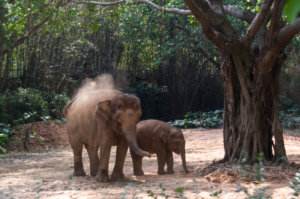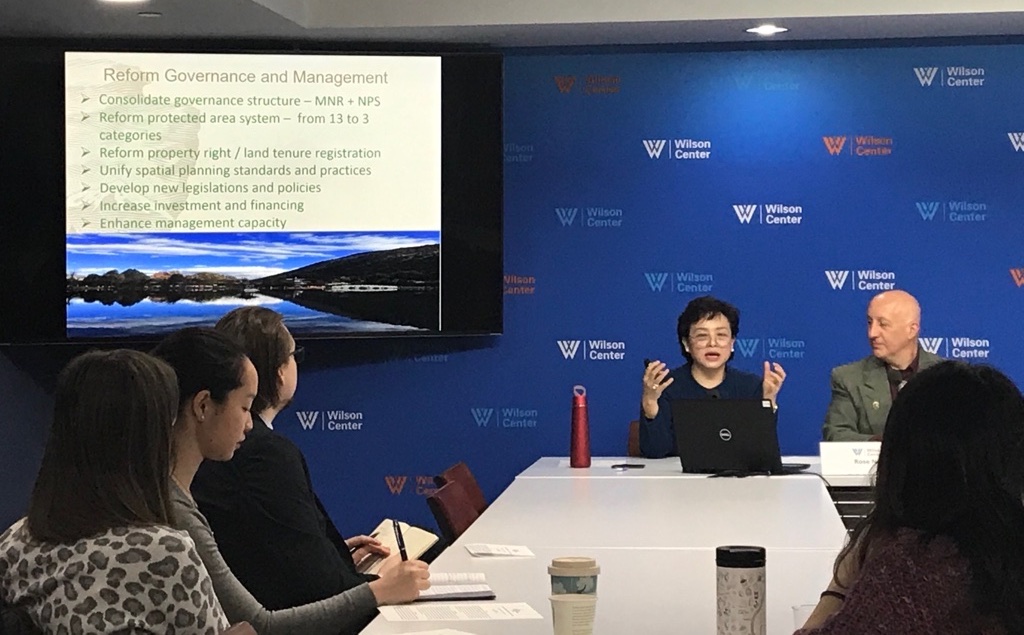The Paulson Institute’s Chief Conservation Officer, Rose Niu Discusses the Birth of China’s National Park System at the Wilson Center in Washington, DC
By Li Zhu, Director of Conservation, The Paulson Institute

While China’s economic rise has been a major focus in the media, its role as a mega biodiverse country remains under-discussed. In fact, China has set aside approximately 18% of its land area for conservation. These protected areas safeguard life-supporting ecosystems and provide vital shelter for wildlife: from the dense mixed coniferous forests in the north that are home to a small but rebounding Amur tiger population, to the lush rainforests in the south where Asian elephants still roam freely, to the rolling grassland in the Qinghai-Tibetan Plateau in the west where charismatic snow leopards scour the vast landscape for prey. However, fragmented governance, underfunding, and poor management are undermining the effectiveness of these protected areas. To overcome these barriers, the Chinese government has been piloting the national park model to streamline its existing protected areas and spearhead the reforms of its protected area system since 2014.
At a recent event at the Wilson Center, Paulson Institute Chief Conservation Officer Rose Niu provided an intimate account of how her professional career has been intertwined with the birth of China’s national park system and how the Paulson Institute has played an instrumental role in helping outline and inform China’s blueprint for its national park system.
Rose explained that her professional focus on national parks can be traced back to 1998, when she was heading The Nature Conservancy’s program in China. Working with partners, she tried to introduce the well-established national park model into Northwest Yunnan as an innovative approach to balancing conservation with the local needs for natural resource use and economic development. This helped sow the seeds of national parks in China.
In 2015, Rose’s path crossed with national parks again as she led the Paulson Institute’s Conservation Program. The Institute entered into a formal MOU with China’s National Development and Reform Commission to initiate a three-year collaboration to lay out the overall plan for creating China’s national park system. This collaboration culminated in a published research series that marshaled the best available expertise, both in China and internationally, to offer insight into key aspects and components of a well-functioning national park system in China as well as to provide recommendations that were later integrated into the Overall Plan for China’s National Park System released by the Chinese government. In addition, the Institute, with support from the U.S. National Park Service (NPS) and Global Parks, has designed and conducted trainings for key Chinese government officials and future park managers who are either responsible for staffing, funding, and overseeing the burgeoning national park system in China or will be at the forefront of managing these new parks.

Recently, the Paulson Institute completed an independent evaluation of the Sanjiangyuan National Park Pilot (SNPP) led by former NPS Director Jonathan Jarvis. By benchmarking this pilot against international best practices for setting up and managing national parks, this evaluation not only identified important gaps for the SNPP management bureau to improve on but also laid a foundation for an effective evaluation system and indicators to gauge the readiness of other national park pilots.
2020 will mark a major milestone for China’s national park system as the first group of national parks will be announced later this year. The Paulson Institute is proud to be part of this effort, and it will continue to work with partners to improve these parks that are natural treasures not only to China but also to the world.



